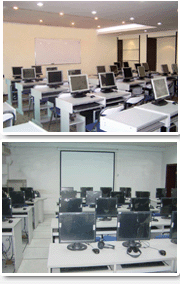Maxwell 16.0仿真實(shí)例培訓(xùn)大綱
1. 靜電場(chǎng)問(wèn)題實(shí)例:平板電容器電容計(jì)算仿真
平板電容器模型描述:
上下兩極板尺寸:25mm×25mm×2mm,材料:pec(理想導(dǎo)體)
介質(zhì)尺寸:25mm×25mm×1mm,材料:mica(云母介質(zhì))
激勵(lì):電壓源,上極板電壓:5V,下極板電壓:0V。
要求計(jì)算該電容器的電容值
1.建模(Model)
Project > Insert Maxwell 3D Design
File>Save as>Planar Cap(工程命名為“Planar Cap”)
選擇求解器類(lèi)型:Maxwell > Solution Type> Electric> Electrostatic(靜電的)
創(chuàng)建下極板六面體
Draw > Box(創(chuàng)建下極板六面體)
下極板起點(diǎn):(X,Y,Z)>(0, 0, 0)
坐標(biāo)偏置:(dX,dY,dZ)>(25, 25,0)
坐標(biāo)偏置:(dX,dY,dZ)>(0, 0, 2)
將六面體重命名為DownPlate
Assign Material > pec(設(shè)置材料為理想導(dǎo)體perfect conductor)
創(chuàng)建上極板六面體
Draw > Box(創(chuàng)建下極板六面體)
上極板起點(diǎn):(X,Y,Z)>(0, 0, 3)
坐標(biāo)偏置:(dX,dY,dZ)>(25, 25,0)
坐標(biāo)偏置:(dX,dY,dZ)>(0, 0, 2)
將六面體重命名為UpPlate
Assign Material > pec(設(shè)置材料為理想導(dǎo)體perfect conductor)
創(chuàng)建中間的介質(zhì)六面體
Draw > Box(創(chuàng)建下極板六面體)
介質(zhì)板起點(diǎn):(X,Y,Z)>(0, 0, 2)
坐標(biāo)偏置:(dX,dY,dZ)>(25, 25,0)
坐標(biāo)偏置:(dX,dY,dZ)>(0, 0, 1)
將六面體重命名為medium
Assign Material > mica(設(shè)置材料為云母mica,也可以根據(jù)實(shí)際情況設(shè)置新材料)
創(chuàng)建計(jì)算區(qū)域(Region)
Padding Percentage:0%
忽略電場(chǎng)的邊緣效應(yīng)(fringing effect)
電容器中電場(chǎng)分布的邊緣效應(yīng)
2.設(shè)置激勵(lì)(Assign Excitation)
選中上極板UpPlate,
Maxwell 3D> Excitations > Assign(計(jì)劃,分配) >Voltage > 5V
選中下極板DownPlate,
Maxwell 3D> Excitations > Assign >Voltage > 0V
3.設(shè)置計(jì)算參數(shù)(Assign Executive Parameter)
Maxwell 3D > Parameters > Assign > Matrix (矩陣)> Voltage1, Voltage2
4.設(shè)置自適應(yīng)計(jì)算參數(shù)(Create Analysis Setup)
Maxwell 3D > Analysis Setup > Add Solution Setup
最大迭代次數(shù): Maximum number of passes > 10
誤差要求: Percent Error > 1%
每次迭代加密剖分單元比例: Refinement per Pass > 50%
5. Check & Run
6. 查看結(jié)果
Maxwell 3D > Reselts > Solution data > Matrix
電容值:31.543pF
2. 恒定電場(chǎng)問(wèn)題實(shí)例:導(dǎo)體中的電流仿真
恒定電場(chǎng):
導(dǎo)體中,以恒定速度運(yùn)動(dòng)的電荷產(chǎn)生的電場(chǎng)稱(chēng)為恒定電場(chǎng),或恒定電流場(chǎng)(DC conduction(傳導(dǎo)))
恒定電場(chǎng)的源:
(1)Voltage Excitation,導(dǎo)體不同面上的電壓
(2)Current Excitations,施加在導(dǎo)體表面的電流
(3)Sink(匯),一種吸收電流的設(shè)置,確保每個(gè)導(dǎo)體流入的電流等于流出的電流。只有在不使用Voltage Excitation時(shí),才用Sink。保證
DC conduction求解器:
不計(jì)算導(dǎo)體外的電場(chǎng),計(jì)算時(shí),不考慮材料的介電常數(shù)參數(shù)。
例:繪出如下圖所示導(dǎo)體結(jié)構(gòu)中的電流流向圖
1.建模(Model)
Project > Insert Maxwell 3D Design
File>Save as>Planar Cap(工程命名為“DC Conduction”)
選擇求解器類(lèi)型:Maxwell > Solution Type> Electric> DC Conduction
創(chuàng)建導(dǎo)體Conductor
Draw > Box
起點(diǎn):(X,Y,Z)>(1, -0.6, 0)
坐標(biāo)偏置:(dX,dY,dZ)>(1, 0.2,0.2)
將六面體重命名為Conductor
Assign Material > Copper(設(shè)置材料為銅)
創(chuàng)建另3個(gè)并列的導(dǎo)體
Select Conductor
Edit > Duplicate(重復(fù))> Along Line(沿線(xiàn)復(fù)制)
輸入line矢量的第1個(gè)點(diǎn):(0,0,0)
輸入line矢量的第2個(gè)點(diǎn):(0,0.4,0)
輸入復(fù)制總數(shù):4(包括原導(dǎo)體)
創(chuàng)建導(dǎo)體Conductor_4
Draw > Box |









 總部李老師
總部李老師